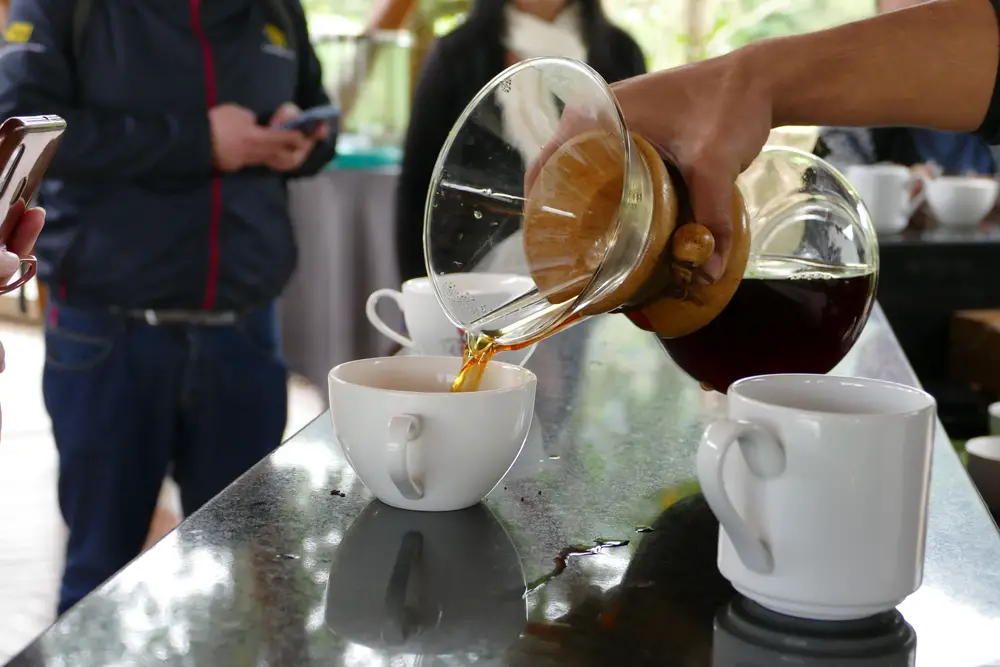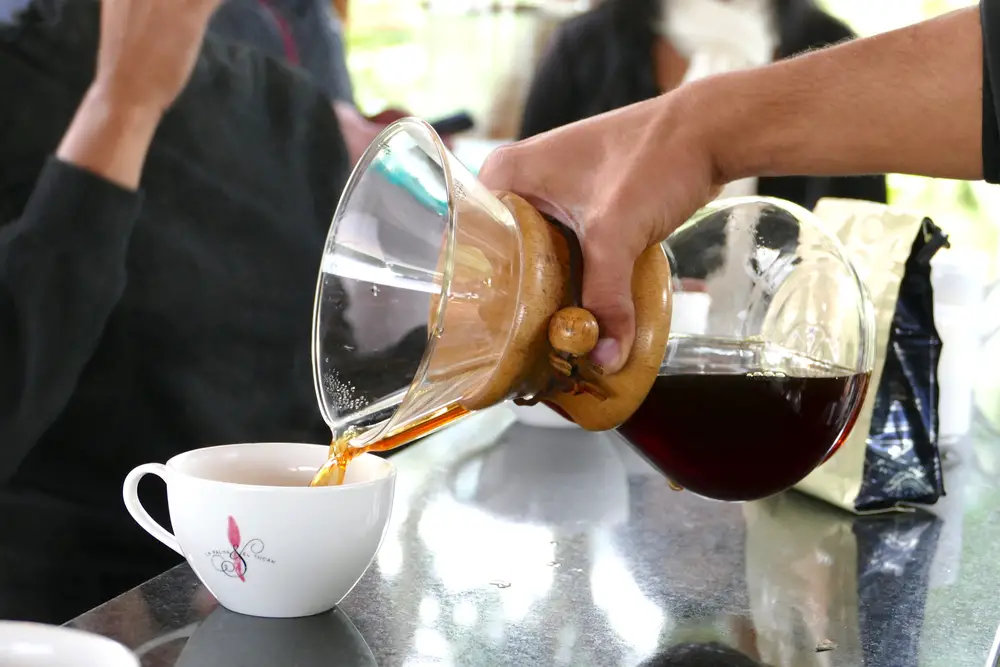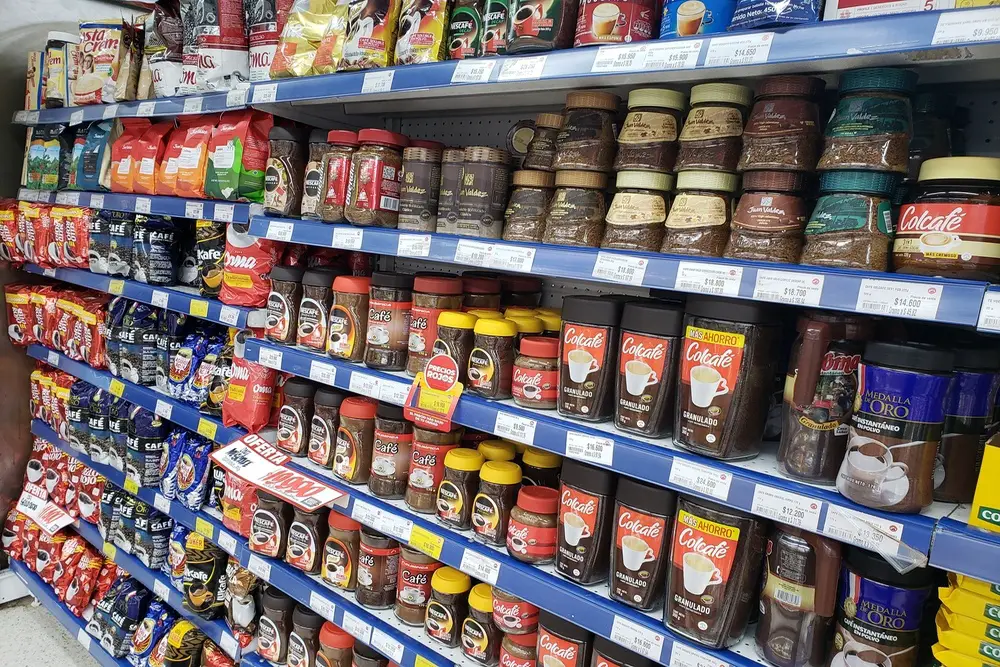Coffee and tea are very popular beverages around the world. There are differences, but also some similarities. For example, both coffee and tea contain caffeine. Depending on how they are harvested, processed and prepared, the caffeine content varies.
Table of Contents
Differences in the composition of tea and coffee
While caffeine is a common component of both plants, its concentration is different. In addition, there are other molecular properties that are more noticeable by their presence in one case and their absence in the other.
Caffeine content in tea
Tea contains about 55 milligrams of caffeine per cup. Different types of tea contain different amounts of caffeine.
Green tea contains the least caffeine, about a third as much as black tea.
Caffeine concentration in coffee
Coffee contains about 125-185 milligrams of caffeine per cup. Due to this high concentration, it has an immediate effect on the body and can cause anxiety or tachycardia.
Molecular composition of tea
Tea contains tannin, catechin, vitamin E, vitamin C, natural fluoride and polysaccharides. Tannin and catechin are linked to the prevention of cancer and heart disease.
Molecular composition of coffee
Coffee contains caffeine, trigonelline, chlorogenic acid, phenolic acid, amino acids, carbohydrates, minerals, organic acids, aldehydes and ketones. Some antioxidants in coffee have been linked to preventing or treating disease and improving health.
Method of making tea and coffee
Tea and coffee are made differently. However, similarities are, for example, the oxidation process of tea and the roasting of coffee. Also, if allowed to grow naturally, tea and coffee plants can become quite large trees. However, they are pruned at bush level so that they can be harvested more easily.
Tea making
Various plants are used to make tea, one of the most common being Camellia synesis. The process starts with harvesting the leaves and buds, then the leaves are dried and rolled to start the oxidation process.
During the oxidation process, the leaves darken and the flavor becomes stronger. The type of tea prepared depends on how dark the leaves are. For example, if the tea leaves are very dark, they are black tea leaves, while white and green tea are very light.
Coffee production
Arabica and Robusta coffee are the two main types of coffee plants used in the coffee industry. The coffee cherries are harvested, immediately processed and dried.
The coffee beans are then roasted, giving them a brown color. The roast is divided into four color categories: light, medium, medium-dark and dark. The color of the roast can be used to determine the caffeine content, among other things. The lighter the roast, the higher the caffeine content.
Coffee and Tea: Two Legendary Stories
Both coffee and tea have a history linked to their origin and the wars that have been waged over their marketing and consumption.
History of tea
This legend is 5,000 years old. It is said that the tea in China is made by Shen Nong, who is considered the father of agriculture and herbal medicine in China. Sheng Nong is said to have tested different types of plants to find out their properties as food or medicine.
The tea came to Sheng Nong by accident. He dropped some leaves from the tree next to him into the boiling water, which gave off a special aroma that he tasted without hesitation.
Tea is the traditional beverage in China and has achieved a leading position in the cultivation, production and export of tea.
History of coffee
If you associate tea with Chinese culture, you might think that coffee has its origins in one of today’s most important export countries such as Brazil, Vietnam or Colombia. But its origins lie further away.
According to the National Coffee Association of the United States it can be traced back to the old coffee forests of the Ethiopian plateau. It was there that Kaldi, a goatherd, discovered coffee after realizing that his goats had more energy and stopped sleeping at night after eating the fruit of a plant.
To test this, he prepared an infusion of the plant’s fruits that kept her awake at night. From then on, its use continued to spread until it reached the main commercial ports.
The same story is also often told in the Arabian Peninsula near the Red Sea.
Preparation of tea and coffee
Both beverages are hot, and while coffee’s versatility allows for a variety of brewing styles, similarities can also be found in two different brews.
Preparation of tea
Depending on the type of tea, the water should be boiled to the ideal temperature for the tea. White tea, for example, has an ideal brewing temperature of 70 to 90 °C.
The tea is then infused in a brewing vessel with hot water for the ideal brewing time. Finally it is served and can be accompanied with milk, sugar or lemon.
Preparation of coffee
The preparation of coffee differs depending on the type of extraction. Generally, however, it consists of ground coffee beans mixed with hot water to create a brew.
When using coffee makers, problems such as over- or under-extracting the aroma of the beans can occur during the brewing time.



